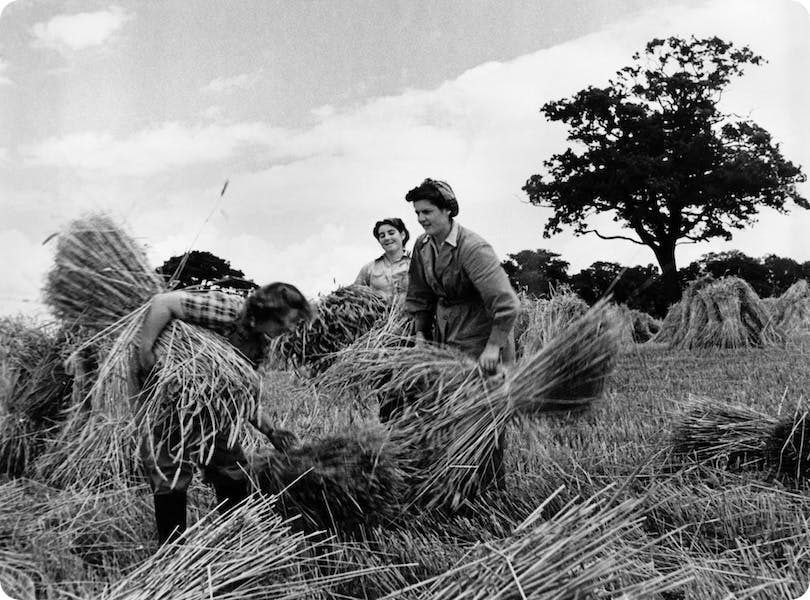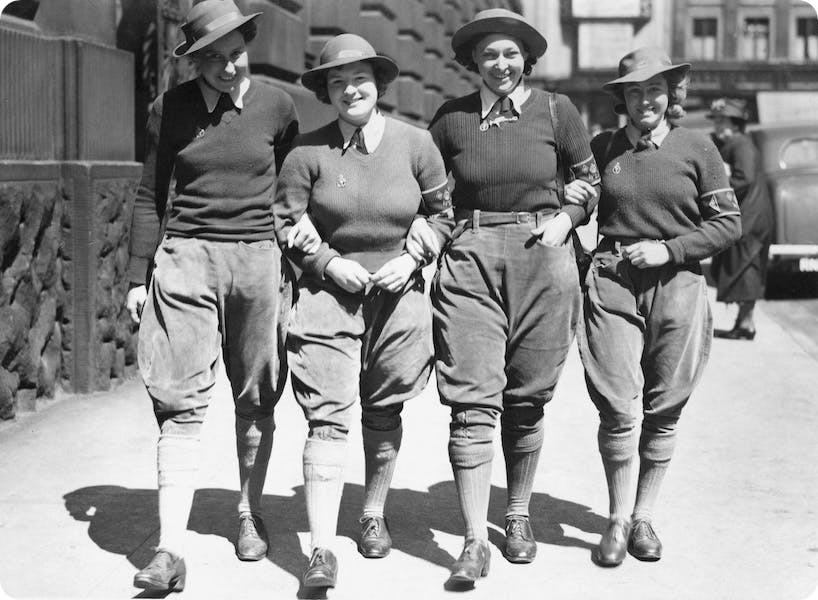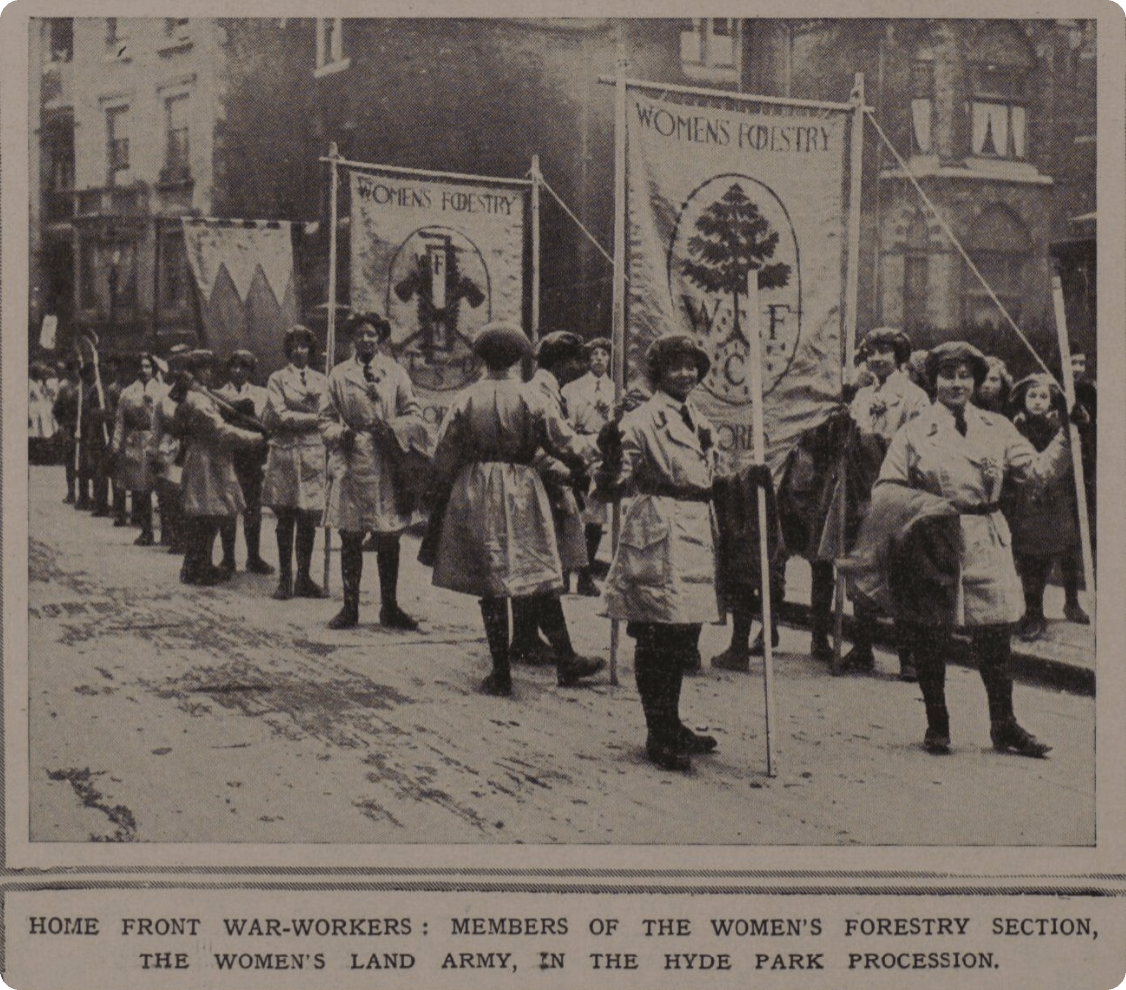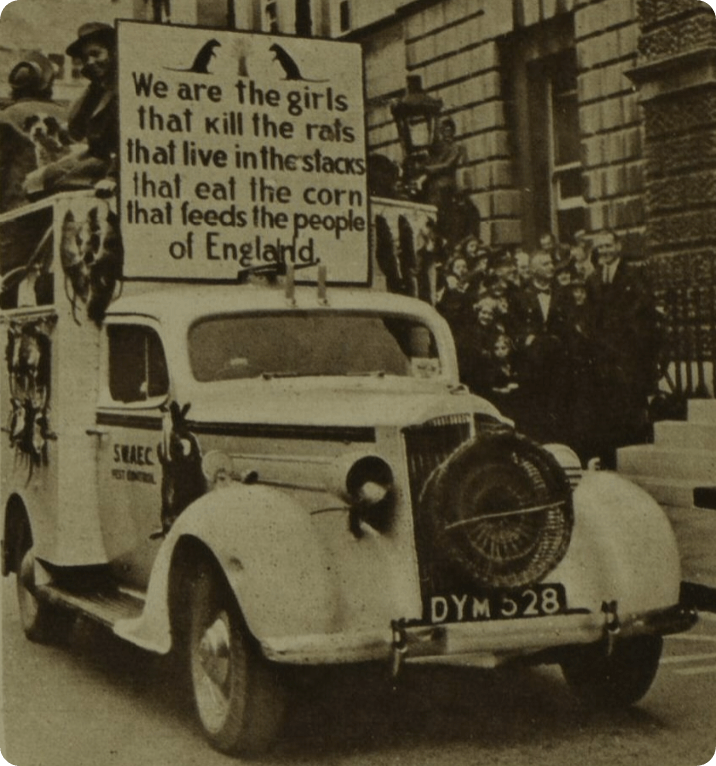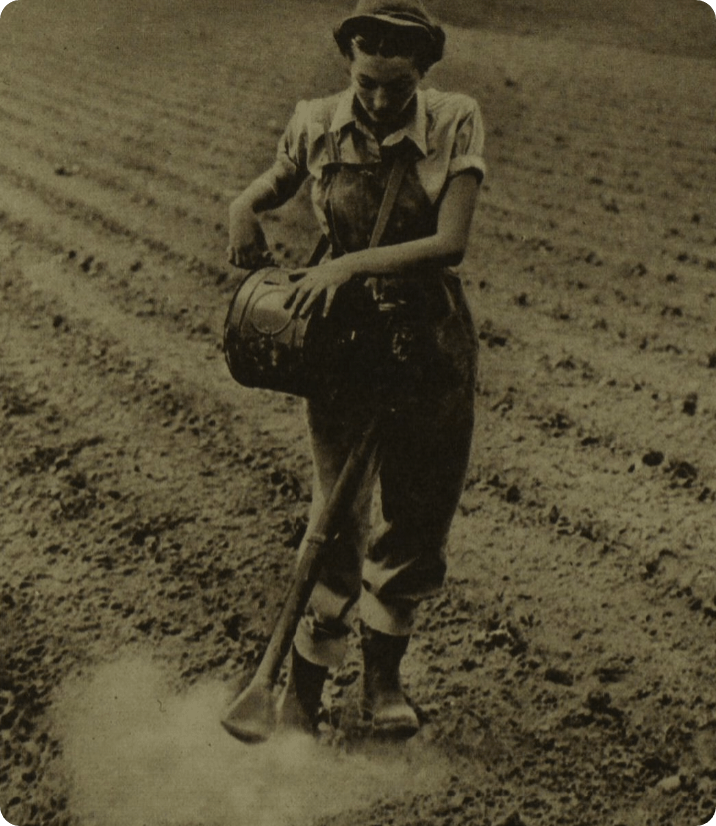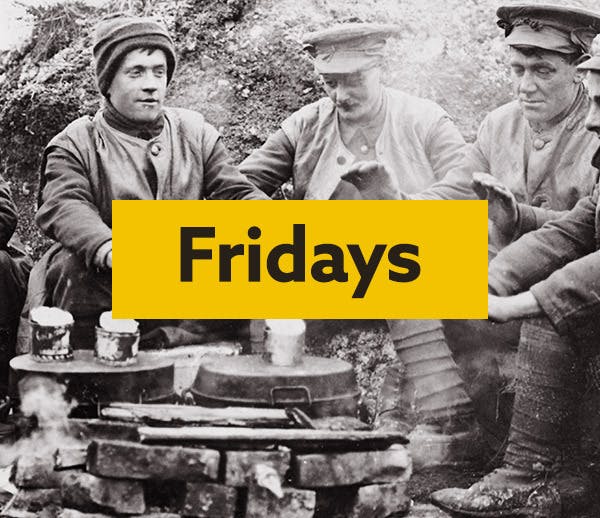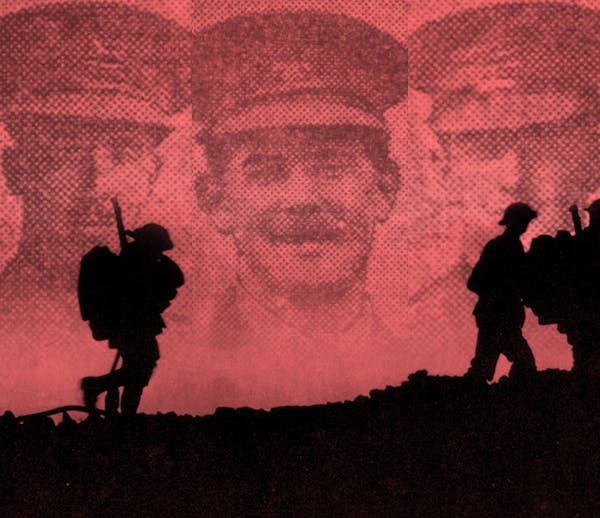The hard work and camaraderie of the Women’s Land Army, told through photographs
4-5 minute read
By Daisy Goddard | December 17, 2024
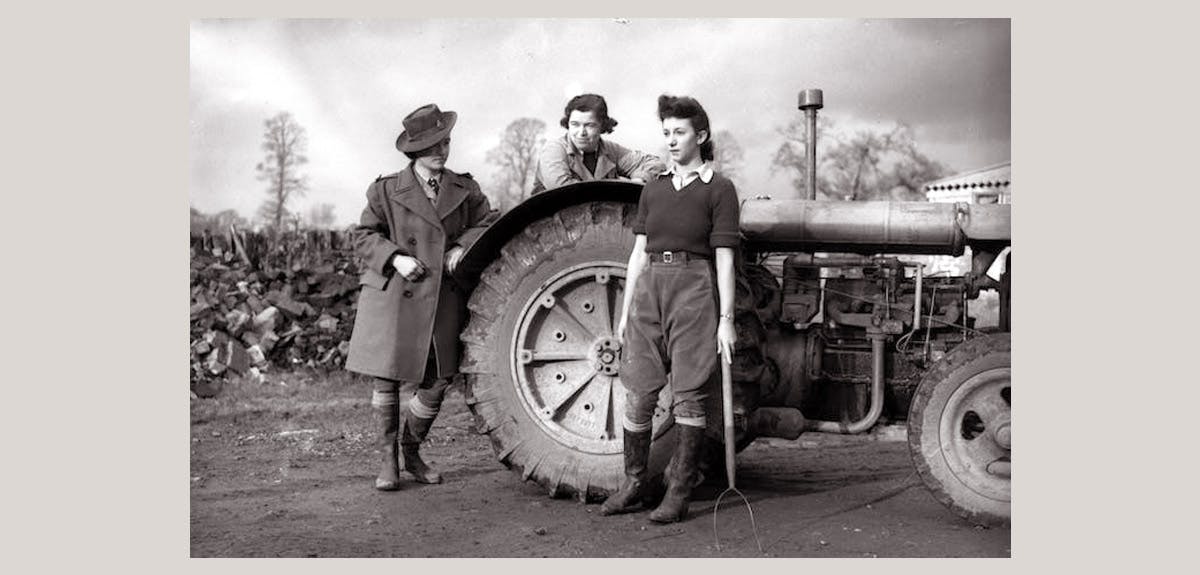
Was your ancestor one of the inspirational women who stepped up to keep the home front running between 1939 and 1945?
Imagine leaving the crowded streets of a bustling city, trading the noise of factories for the wide-open fields of the countryside. As a Land Girl, you’d rise before dawn, hands blistered from wielding unfamiliar tools, back aching from hours spent plowing, planting, and harvesting the fields. The work was relentless - digging trenches, tending crops, and feeding livestock - but every grain harvested kept the nation from going hungry.
The British government established the Women’s Land Army (WLA) amidst the devastation of the First World War. While men fought for their lives on the battlefield, women stepped into roles that would have been unthinkable in peacetime.
Find your family's heroes
Search Women's Land Army service cards.
When war loomed again in 1939, the WLA was revived and faced down the looming specter of global conflict. As ration books became household staples and fears of food shortages grew, women once again prepared to shoulder the weight of the nation’s agricultural needs.
The need for labor extended beyond the fields. With men away fighting, forests became another vital resource to sustain the war effort. Enter the ‘Lumber Jills’ of the Women’s Timber Corps - resilient women who learned to wield axes and saws, felling trees and hauling timber. Their spirits were emblematic of wartime resilience.
Understanding your ancestors’ stories
Separated from their families in the cities and the men who were fighting overseas, the brave women of the WLA made immense sacrifices to keep the country going. The women in your family were no exception – perhaps they chopped wood with the Timber Corps or ploughed the fields working as a Land Girl.
Understanding their wartime experiences begins with a simple search. If your ancestor worked for the WLA during the Second World War, their name may appear within our Women's Land Army Service Cards, which span from 1939 to 1950.
The ups and downs of life as a Land Girl
Although it began as a voluntary service, the WLA came to be included in the National Service Act. This meant that single women and widows without children were called up and given placements in industry and agriculture.
Within the WLA’s ranks were women from all walks of life. Many city-dwellers experienced the countryside for the first time. Born-and-bred Londoners encountered the rolling fields of rural areas up and down the country. Many were plagued by homesickness and toiled hard in the fields despite receiving a very low wage.
The work was arduous. Land Girls ploughed, milked cattle, cared for livestock and picked up the many varied maintenance jobs were needed on the farms. Despite no prior experience, these hardworking women rolled their sleeves up and got stuck in the pressing tasks. For many of them, learning on the job amidst a devastating global conflict was the hardest thing they’d ever had to do.
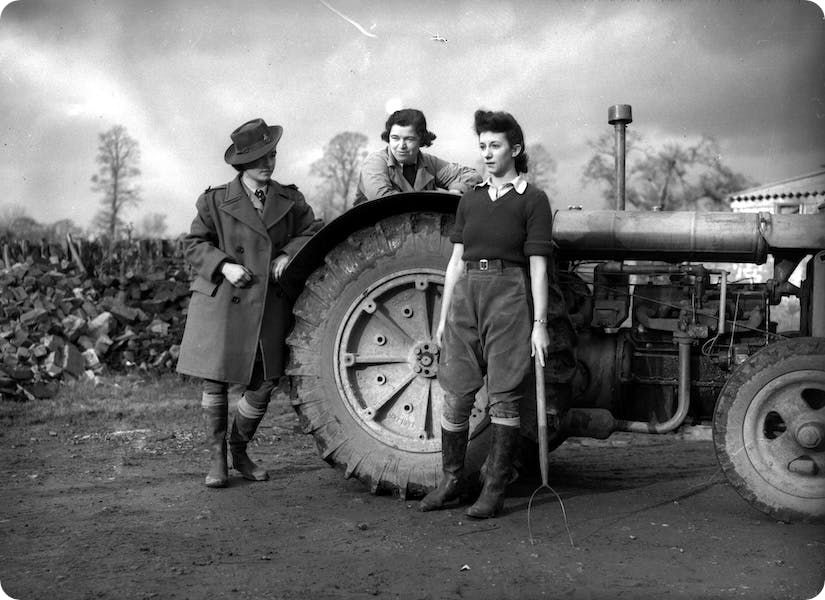
WLA workers in North Somerset, c. June 1942.
But it wasn’t all struggle and strife. The tough conditions bonded women together in a tight camaraderie. Many Land Girls enjoyed their time with the WLA and received the recognition they deserved from farmers for their hard work.
Our Land Girl ancestors made headlines
Over 200,000 women had served in the Women’s Land Army by 1941 – so many of us can proudly say that we are descended from a Land Girl. The Findmypast newspaper archive offers an even deeper insight into what life would have been like for them.
Jumping back to 1918, we find members of the newly-formed WLA marching in a procession through Hyde Park, reported in the Illustrated London News. We can see the pride in the faces of these women as they march with banners emblazoned with the logo of the WLA’s Forestry Section.
The WLA wasn’t formally thanked for its efforts with medals until 2008. This didn’t mean that Land Girls’ contribution went unrecognised, however. On 14 March 1940, a group of Land Girls – working-class women, from a variety of backgrounds – met Queen Elizabeth II at London’s Goldsmith’s Hall.
This wasn’t the only time that Land Girls got royal recognition.
Princess Elizabeth visited a rally of 100 Somerset WLA members in Bath on 20 October 1945.
As the Illustrated London News described, 'the Princess visited the Roman bath and then took the salute, from the Guildhall, at a march-past of the Land Girls'.
The work performed by Land Girls was tough and varied. It continued to run after the end of the Second World War in 1945 - this article from 26 June 1948 shows a Land Girl in Kent, spraying a beetle-infested potato crop with pesticide.
The WLA was formally disbanded by Queen Elizabeth II on 30 November 1950. To celebrate its service, a final parade was held at Buckingham Palace.
